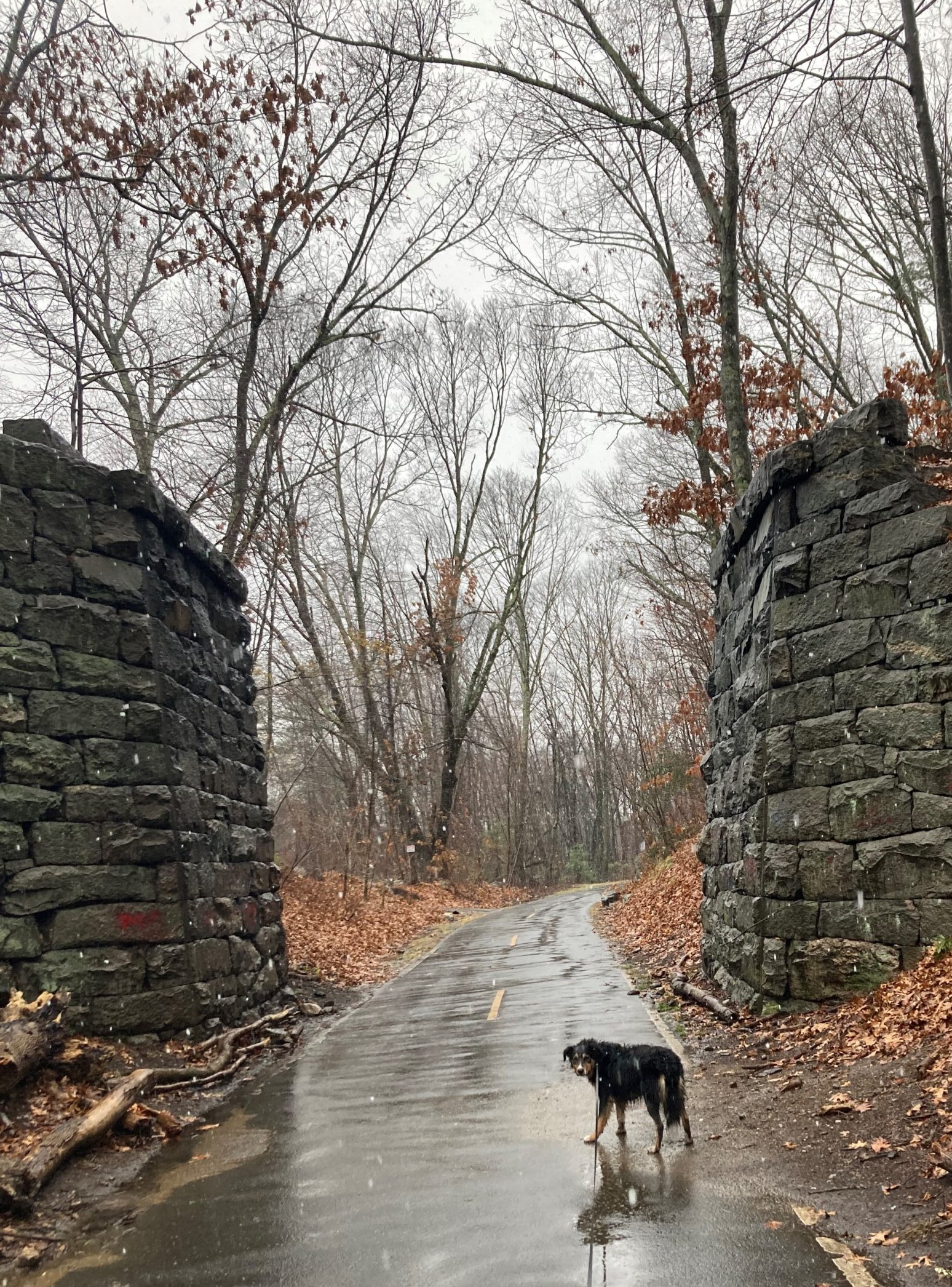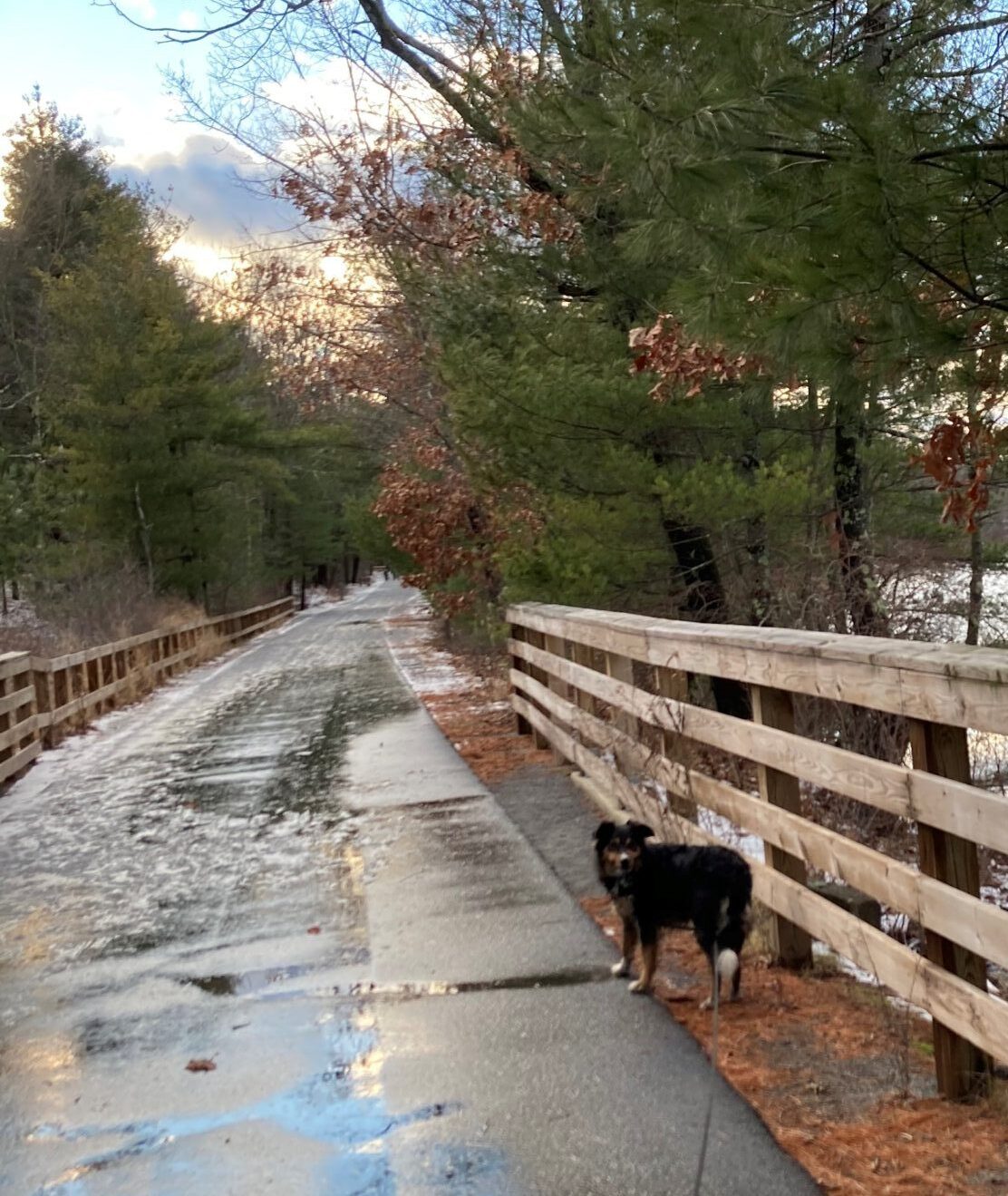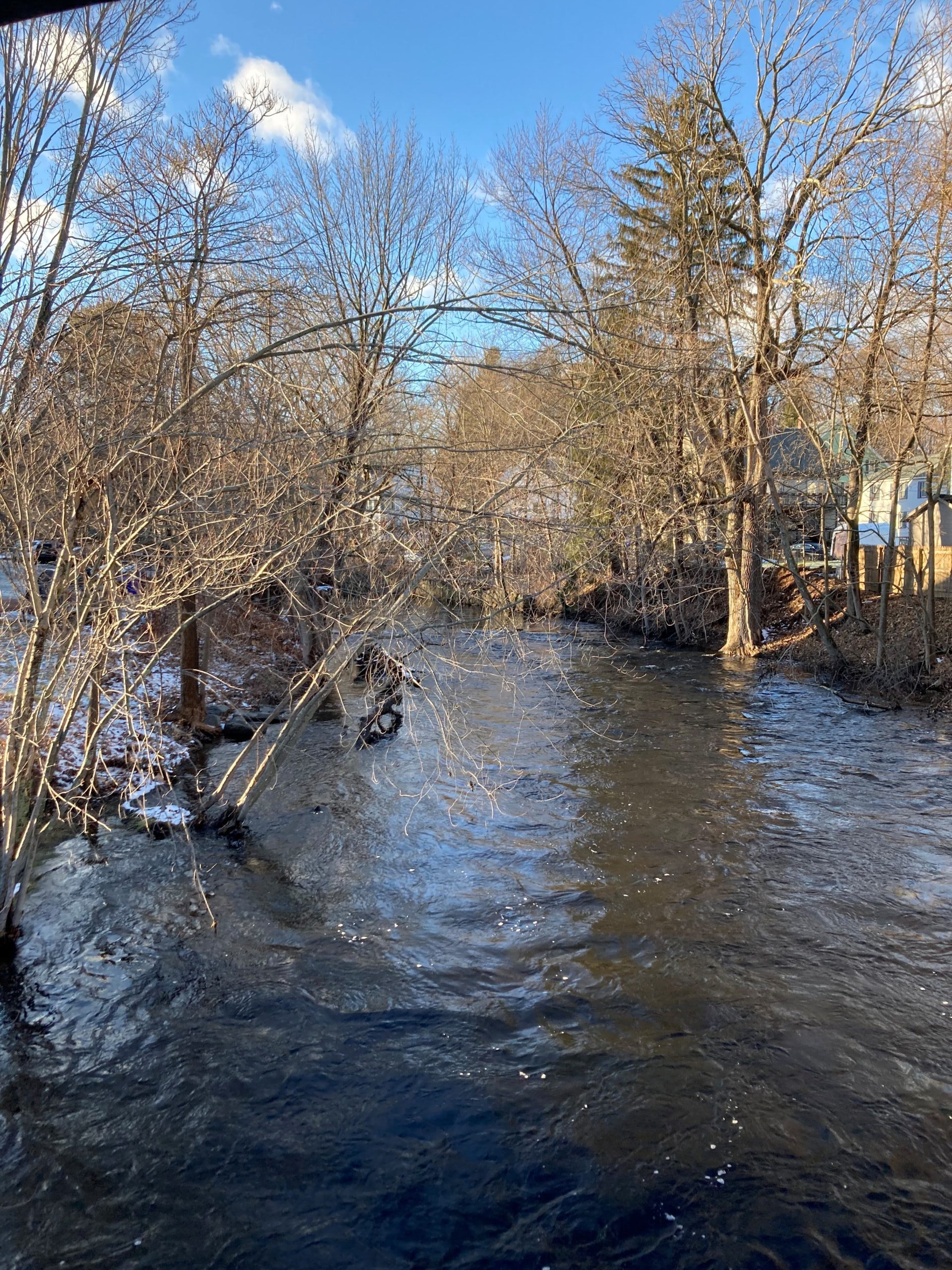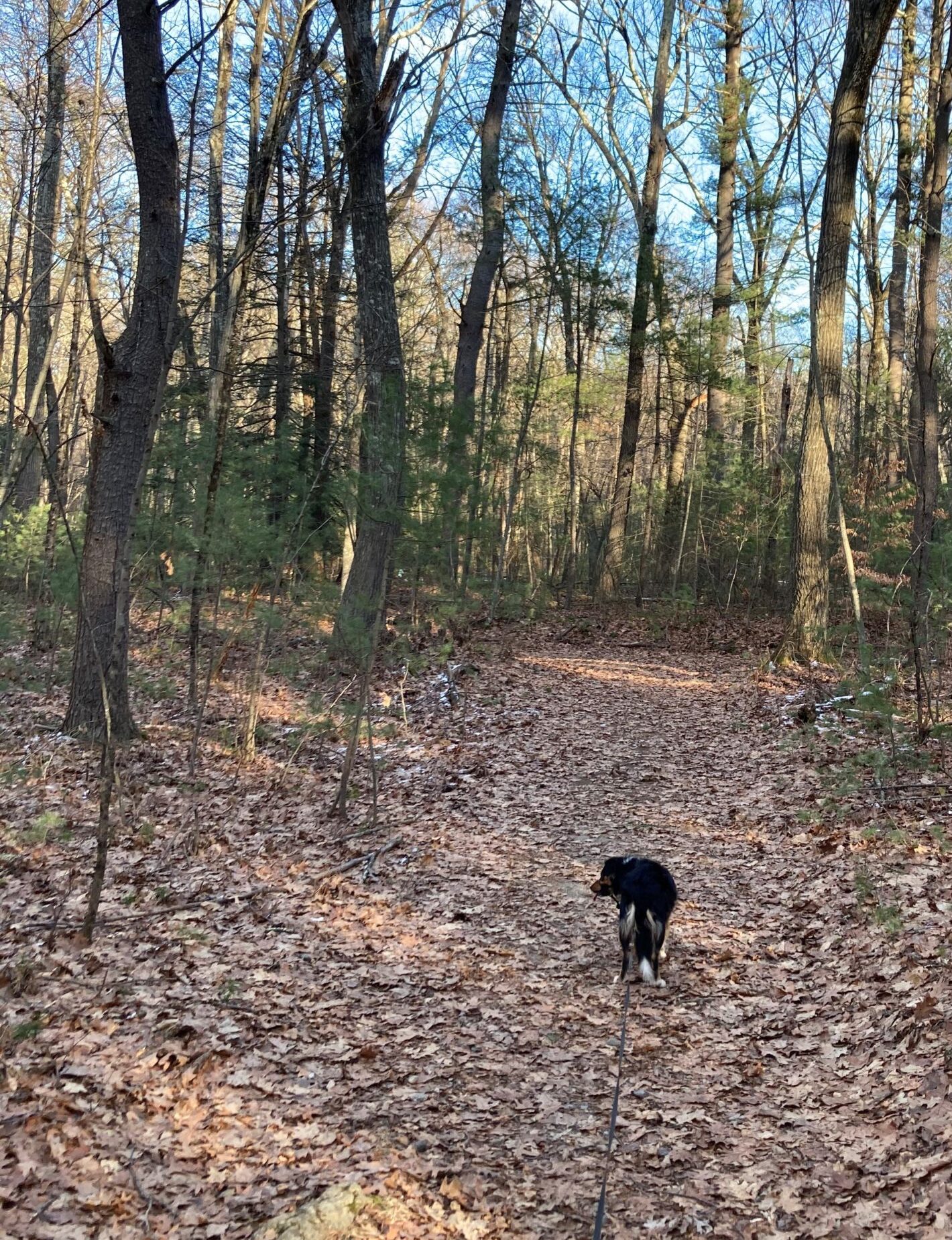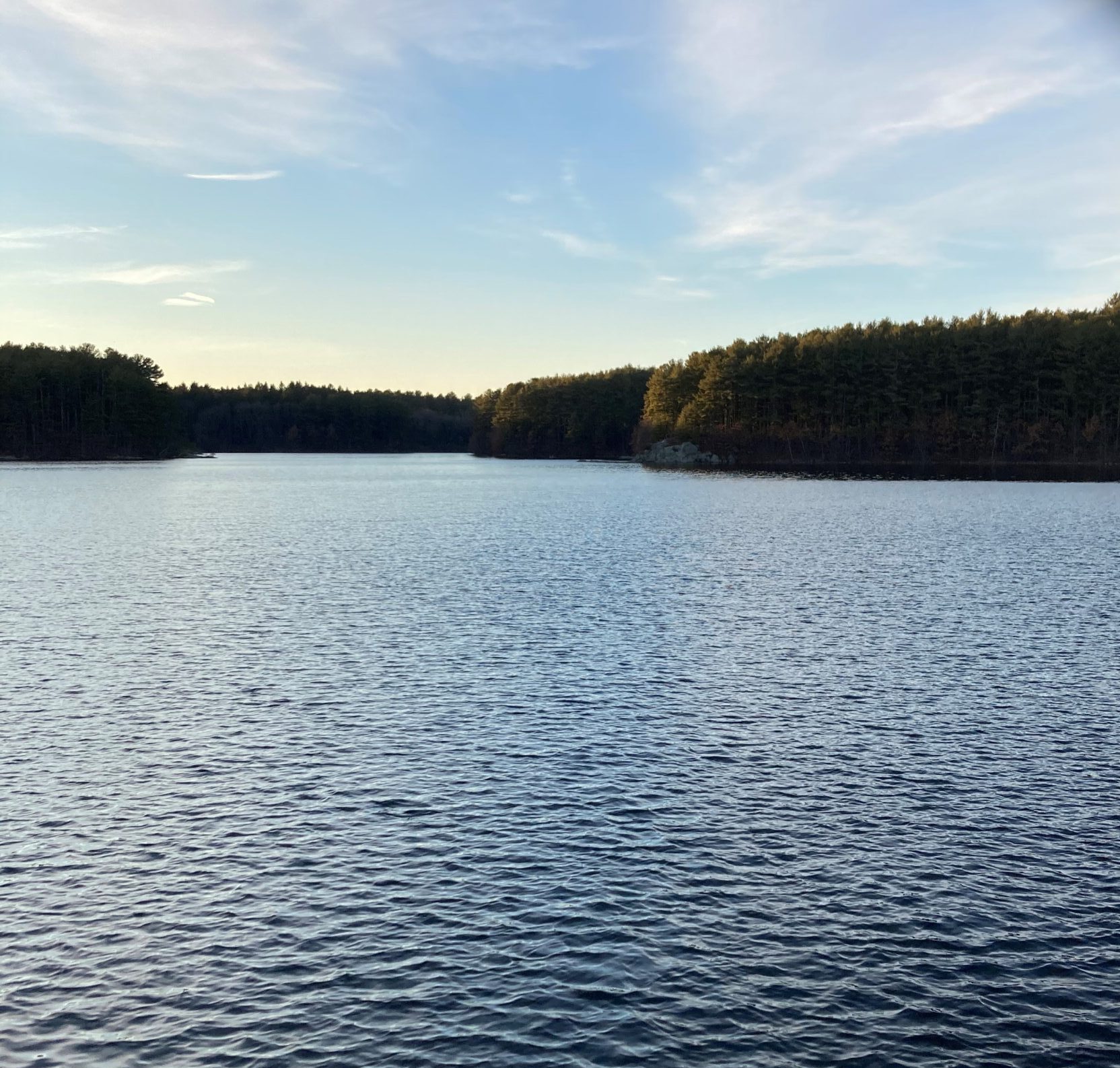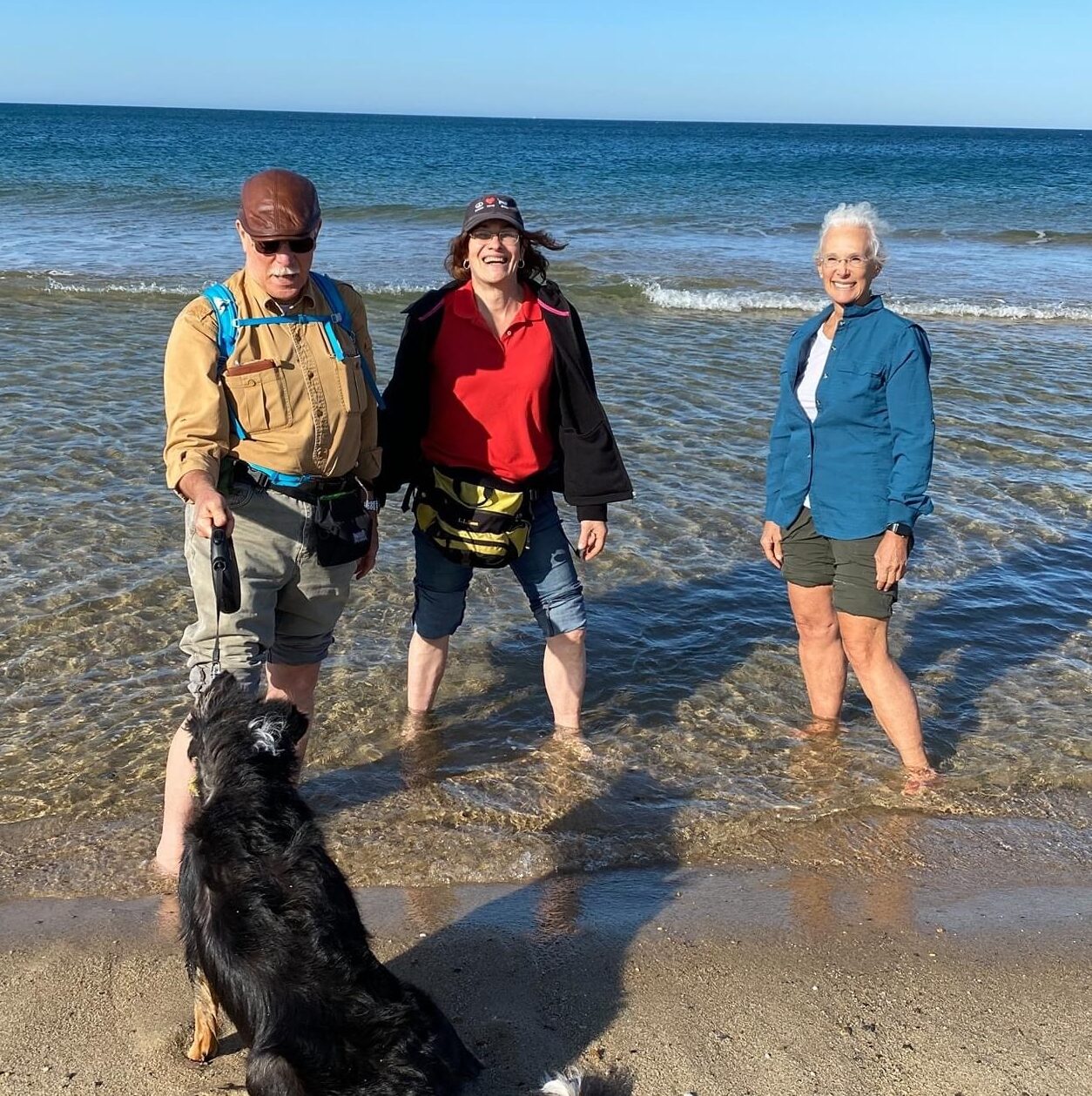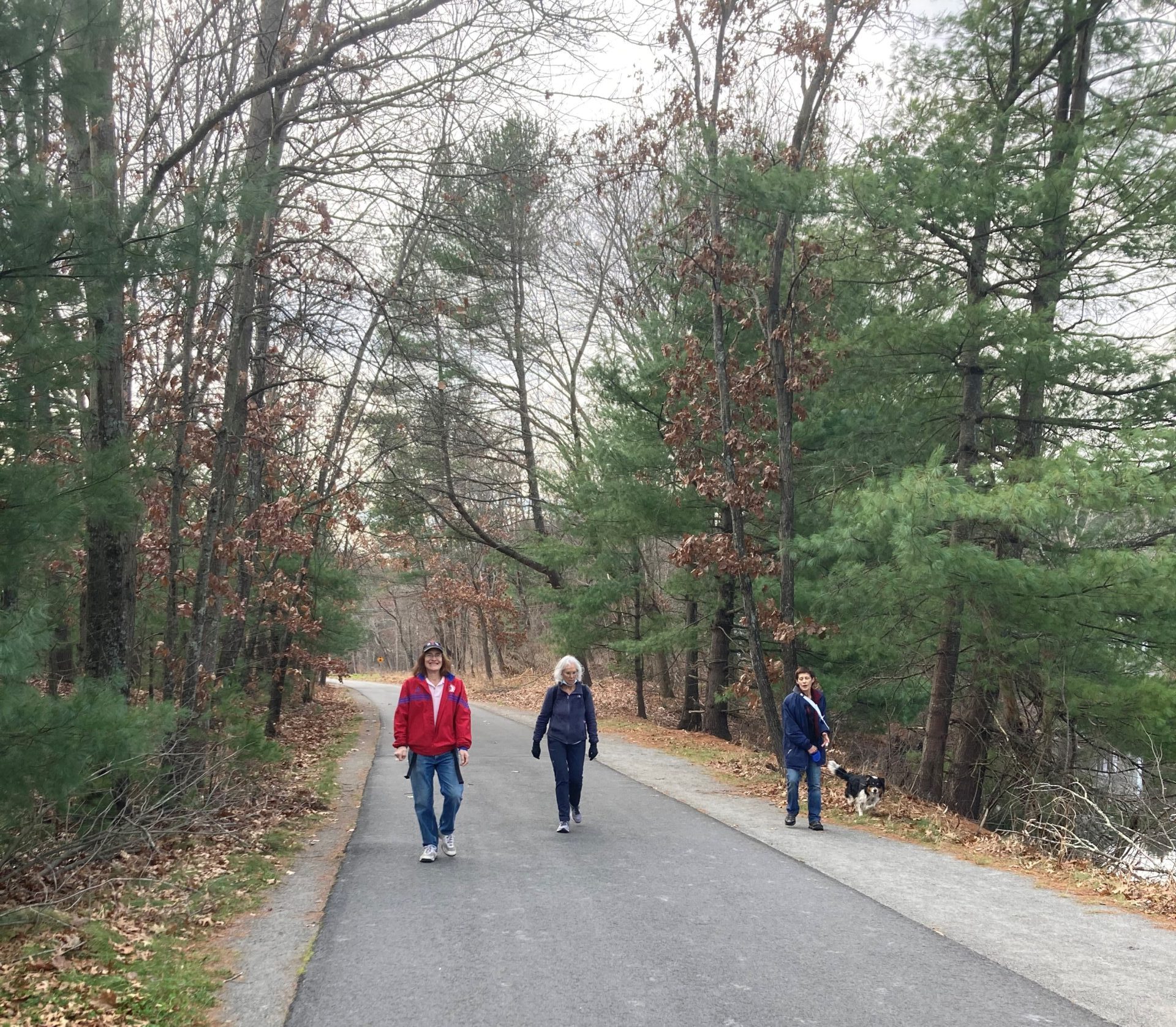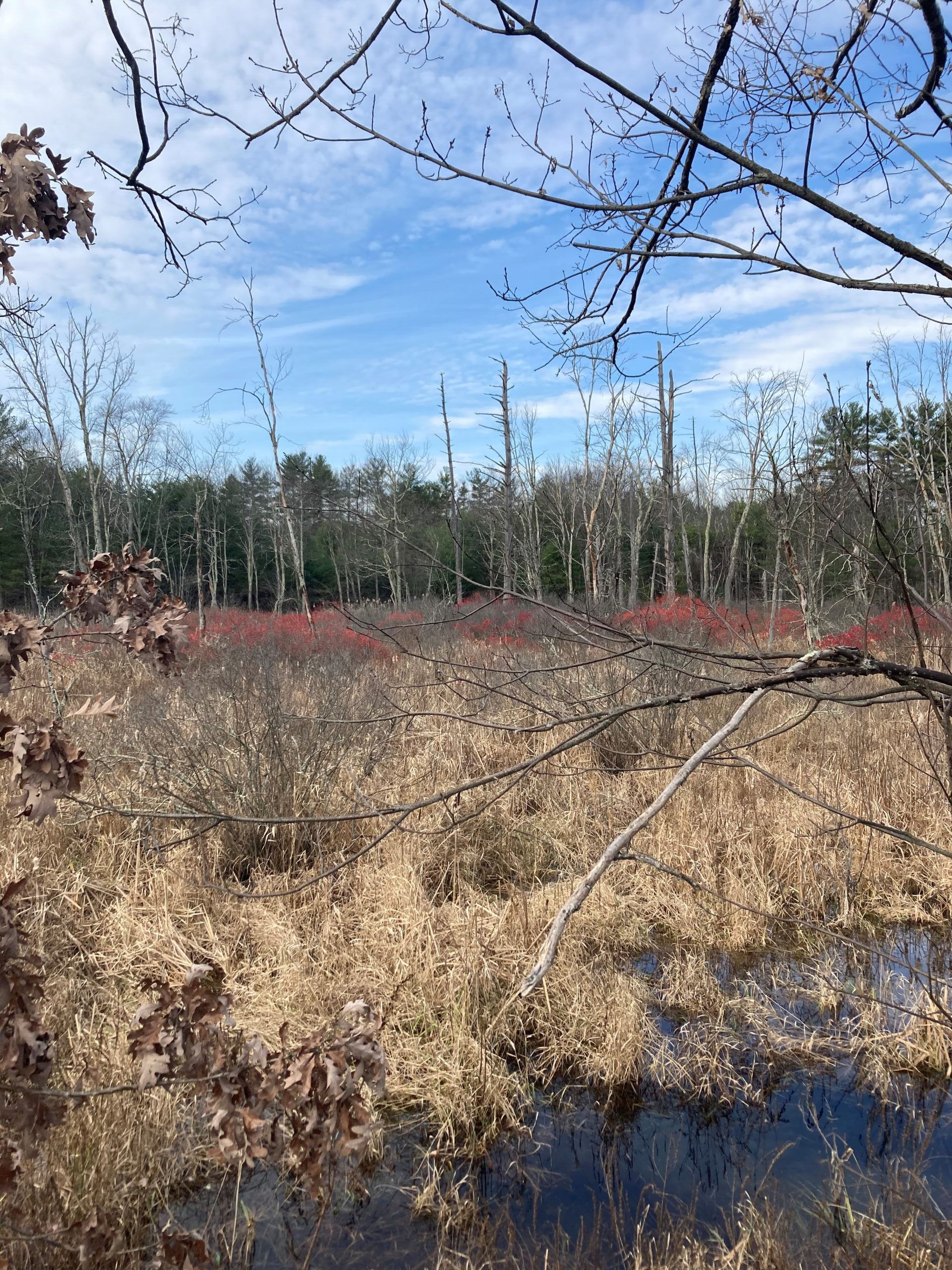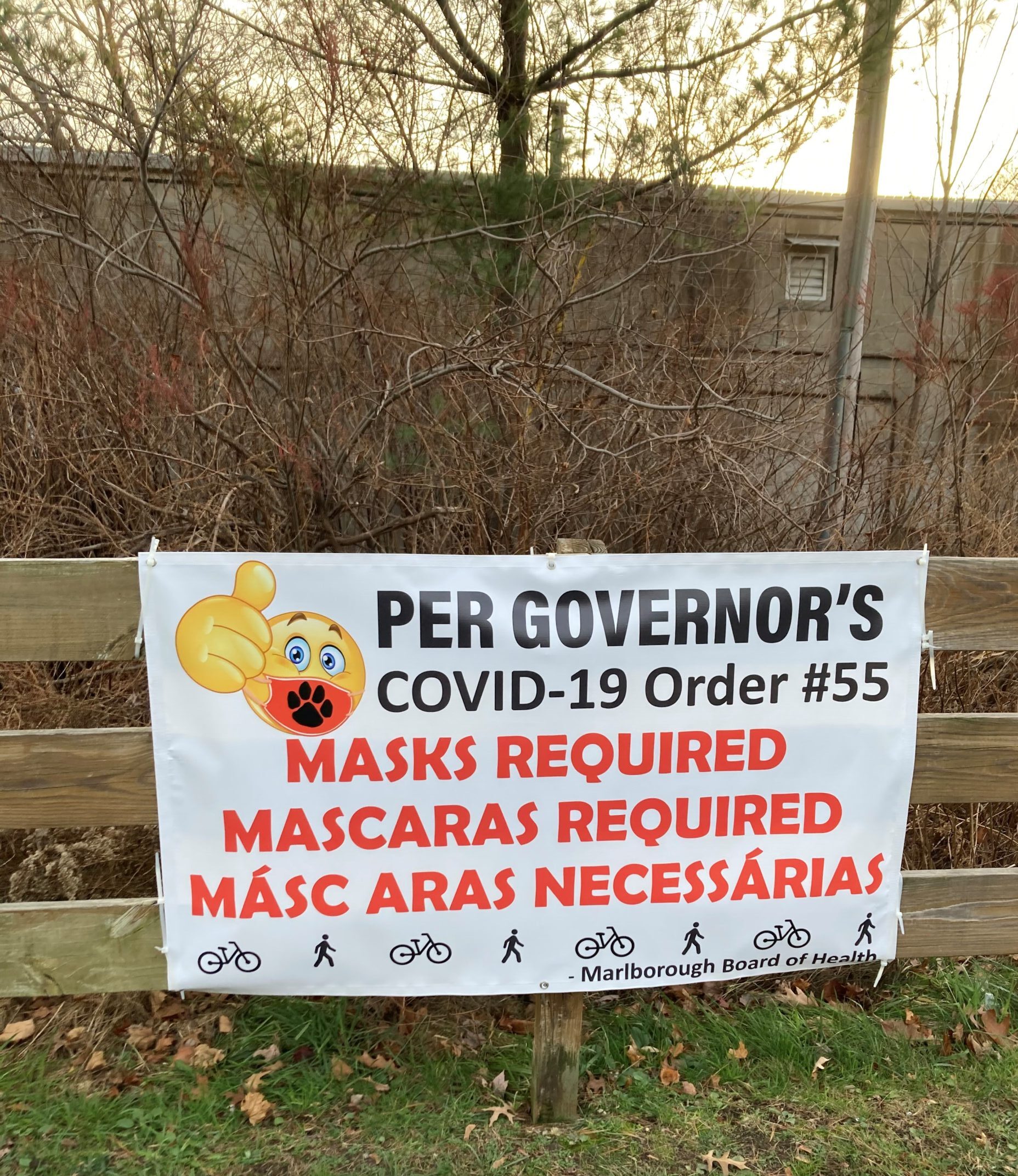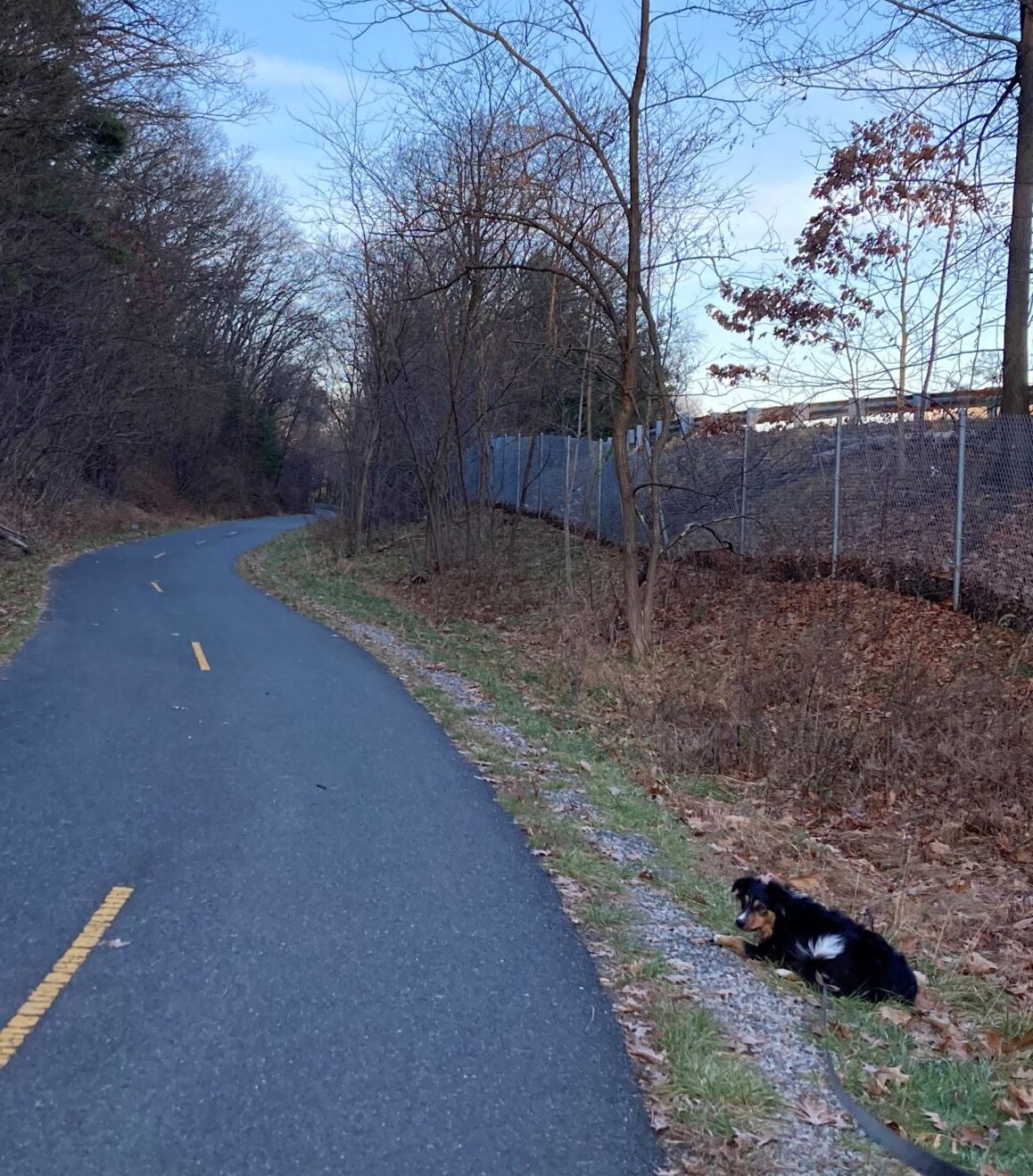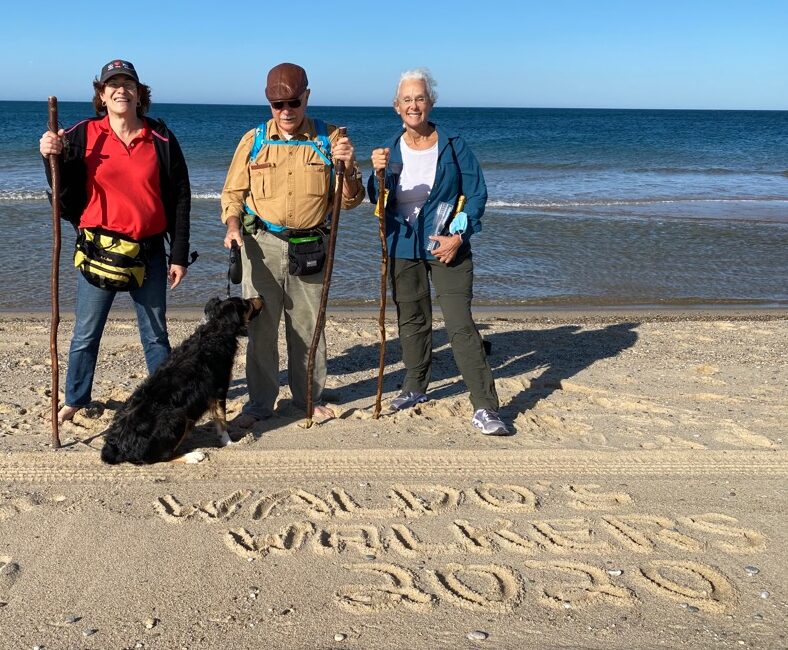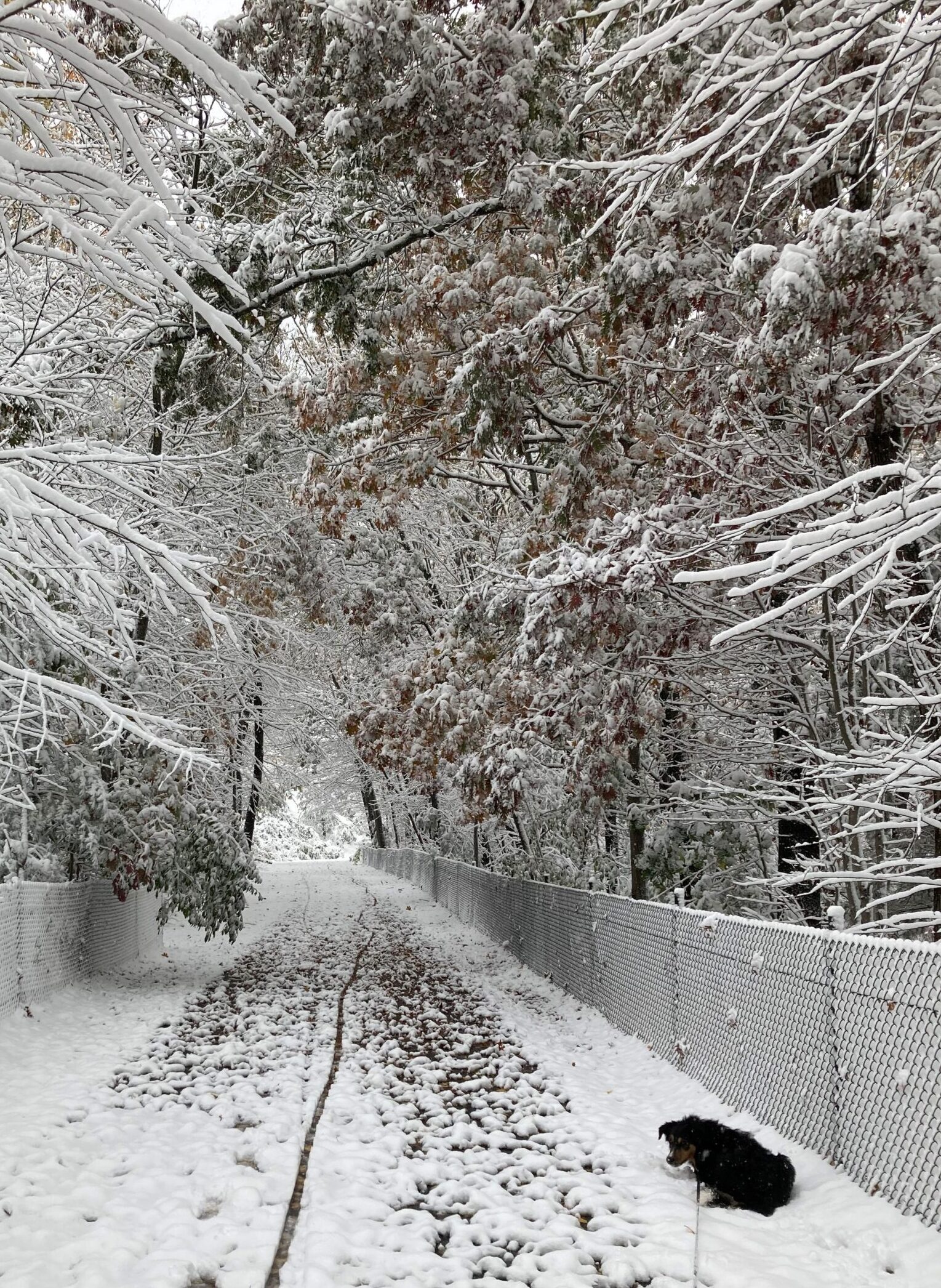Gray is the color… the most important of all… absent of opinion, neither/nor.
-Gerhard Richter
It’s a grey day out on the rail-trail. It’s cold and the tarmac is wet, slushy in some places. There is a light breeze that blows, on occasion, and when it does, its cold bites through my gloves and makes my fingers ache. The frigid air numbs my cheeks, the only exposed skin I have. Our pace is brisk – Waldo’s because it is his nature and mine because I’m trying to generate some body heat.
The daylight, being scattered by an overcast, is soft and diffuse. There are no sharp edges or glaring contrasts. Edges still exist, but they are not black against white, they are just different shades of grey. Physics and Chemistry would suggest that objects do not really have edges in the way we think of them. Atoms and molecules are bound to each with an equivocal grasp that is loosed by normal vibrations caused by heat. The tarmac I walk on has free roaming heavy hydrocarbon molecules just above the surface that intermingle with molecules of air. Air molecules also grapple to the structure of the solid tarmac. It’s like an Escheresque dance of air and tar. Far above the asphalt, all is clearly gaseous. Within the substance of the tarmac, everything is clearly solid petroleum residue. But there is this thin gap between those two extremes where one morphs into the other like an Escher drawing. As I walk along behind Waldo, watching his attention disappear into nature in very much the same way, I am struck by the idea that much, if not all, of life follows a similar meme.
After all, there is no impenetrable boundary that separates me from the rest of the Universe. My physical being is made up of atoms and molecules, just like all other matter. There is no substance in my makeup that does not make up all of existence. What I am corporeally is a product of the ebb and flow of energy in the cosmos just like everything else. I am part of the universe and inseparable from it. As I reach out to interact with the rest of reality, it reaches into me with unavoidable tendrils of truth that are there whether I want to deny them or not.
One might argue that man has a “soul,” a “consciousness,” or a “mind.” Something that is unique to the species, or maybe even shared with other living things, but not the inanimate, like rocks and dirt. Perhaps this animas is not subject to the shackles of deterministic matter and controlled by the laws of nature. Maybe some of what we are is made of something the rest of the world does not have. If there is such a thing, there is no objective evidence of it. No scientific experiment can demonstrate it. Is it rational to think of ourselves as being anything more than a collection of stuff, the very same stuff that the rest of the universe is made of?
Perhaps, a more realistic way of seeing ourselves and the world, instead of being composed of a collection of solid objects, is to think of everything as being liquid, melding everywhere with everything else. But a viscus liquid that maintains some cohesion and separate identity, although only vaguely separate.
Waldo is out in front of me, sniffing some probably God-awful substance I do not want to identify. Because I witness it, it is a part of me. Waldo’s life experience fluid flows into and mixes with my own. I am not separate from Waldo, my essence is mixed with his. The trees and bushes, such as they are this time of year, intermix with my quintessence through the conduits of sight, hearing and smell. I absorb something of the nature of the ground on which I walk through my sense of touch, the feeling of my muscles contracting and the lift of that the very dense liquid, ground, that keeps me from falling through the Earth.
And these liquids are not made of just different shades of grey. They are vibrant with a cornucopia of bright colors — hues of emotion, tints of desire, dark pigments of fear, pastels of hope and golden glints of bliss.
It is all so magical.



